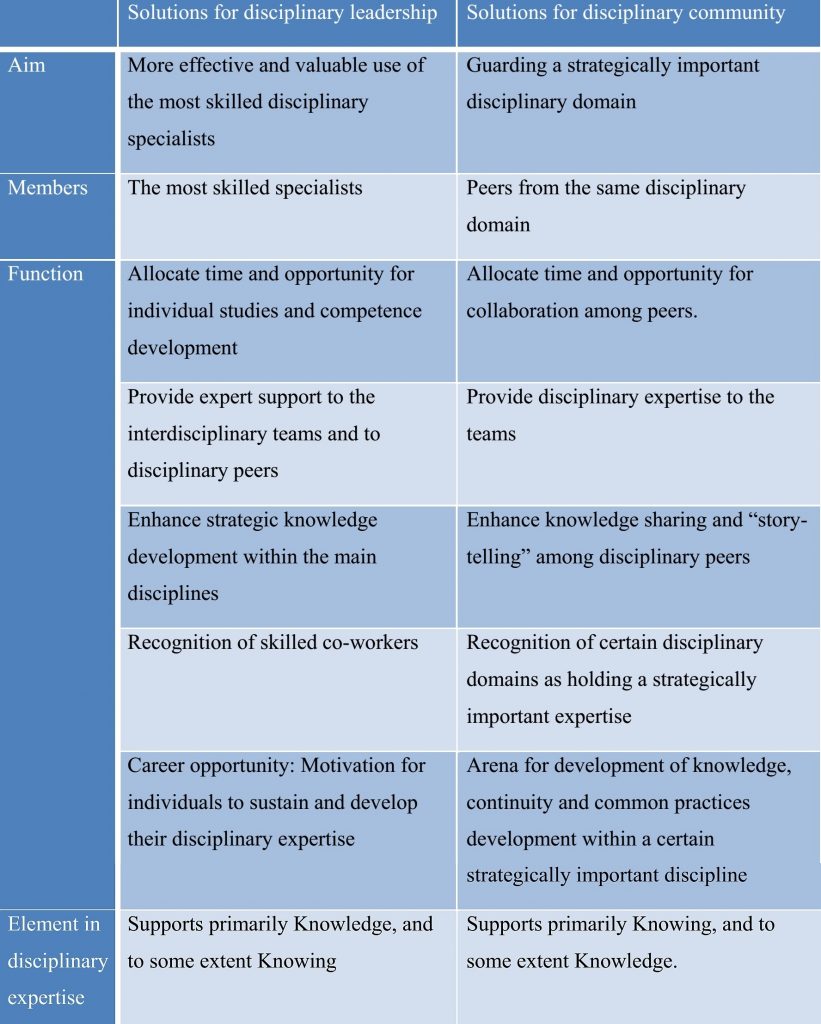
Solutions for sustained expertise in project-based organisations
The integration of complementary knowledge to develop innovative solutions and solve complex problems is often achieved through projects and interdisciplinary project teams. Projects are thought to facilitate the combining and integration of different disciplinary domains of knowledge in an efficient way. However, interdisciplinary projects also seem to lead towards an organization that in the long-term actually runs the risk of losing depth in key disciplinary domains of knowledge.
The difficulty of sustaining and developing disciplinary expertise in project-based organizations has been identified and discussed in a number of studies, so the problem is well-known. However, only a few studies have so far developed insights into how this challenge can be met.
A recent study1 compares three cases to identify and analyse solutions that emerge in project-based organizations as a response to the challenge of sustaining and developing disciplinary expertise.
The three case study firms all rely heavily on interdisciplinary and co-located project teams in R&D work. The project management logic in all three has been heavily influenced by agile project management principles, leading to arrangements where the interdisciplinary project teams were intended to be stable over time. This made the cases particularly interesting for the purpose of the study.
The analysis revealed that the most prominent structural solution implemented to deal with issues regarding disciplinary expertise was the establishment of expert structures for a limited number of individuals within particular disciplinary domains. Experts belonging to such structures participated less in interdisciplinary project teams, and focused more on maintenance and development of a particular disciplinary expertise by keeping up to date with the recent developments within their respective domain and supporting the project teams with their expertise when needed.
Two distinct forms of expert structure solutions were identified. One form uses the expert structures to enhance disciplinary leadership, and the other uses them to establish disciplinary community. The main characteristics for the two types of expert structure are shown in the following table.
Expert structures for disciplinary leadership or for disciplinary community
(source: Bredin & Enberg 2015)
Reference:
- Bredin, K., & Enberg, C. (2015). Solutions for sustained expertise in project-based organizations: Organizing for disciplinary leadership or disciplinary community. In IRNOP Conference, London. ↩
Also published on Medium.






